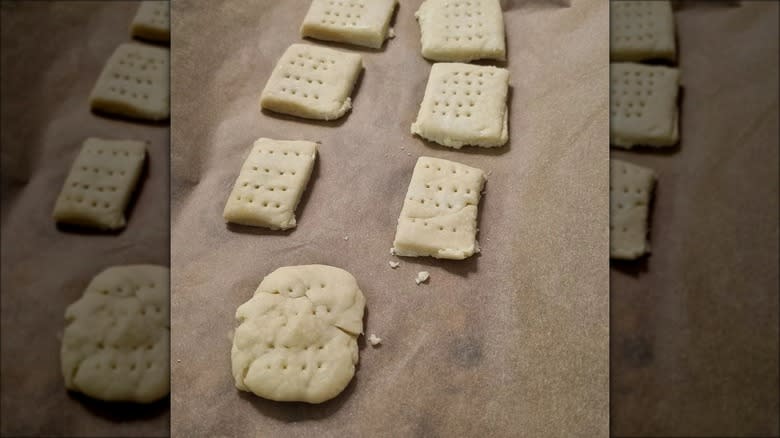Why Sledging Biscuits Are So Popular In Antarctica

One of the joys of armchair travel is virtually eating your way around the world, letting your eyes devour descriptions and photos of regional specialties from Seville to Sydney to Samarkand. There's one place, however, where flights of fancy seldom make a landing: the not-quite-lost continent of Antarctica. This is because the indigenous population seems to consist largely of penguins, seals, and research scientists, and while the former two do love their sashimi, we tend to imagine the last-named living on a diet of Doritos, ramen, and other imperishables. That and frozen foods, of course, since even if the freezer conks out these are guaranteed not to go bad.
Well, it turns out that even Antarctica, too, has a few signature dishes, these being native to yet another group of overlooked (if temporary) inhabitants: adventure tourists, or, as they were called in the 20th century, explorers. Back in the early days of South Polar travel, seal and penguin might be on the menu, along with a hardtack-like item called sledging biscuits. These could be eaten alone or with pemmican, while the two ingredients, combined with water, made up a hearty stew called hoosh. Ambrosial it probably wasn't, as it's largely fallen out of favor now that freeze-dried meals make a better exploration option, but those who have tried it say it's not terrible. As for the biscuits themselves, they're plain but filling, which keeps them a popular staple of Antarctic travel. Overall, however, they're considered more a necessity than a treat.
Read more: US Foods You Surprisingly Can't Find In Canada
What Are Sledging Biscuits Like?

The very earliest sledging biscuits probably weren't remotely appetizing, particularly if they were made in true hardtack style: nothing but water and flour. At some point pretty early on, however, someone determined that fat was necessary for cold weather survival, so butter entered the mix. By the time polar explorer Roald Amundsen set out on his expedition, he'd obviously put quite a lot of thought into making the most nutritious sledging biscuits possible, using whole grain flour and adding oats for extra protein. He also avoided the use of baking soda in his biscuits since this ingredient, while it might result in lighter baked goods, actually reduces the effectiveness of certain nutrients.
A modern sledging biscuit recipe typically includes just five ingredients: flour, salt, butter, baking soda, and water. Descriptions of the flavor tend to damn them with faint praise, but the consensus seems to be that they're relatively inoffensive. They do taste better when topped with something, though, whether it be the traditional pemmican or butter, cheese, vegemite, or marmite (assuming you enjoy the, er, polarizing taste of either or both of these spreads). If you're not out on an Arctic expedition where every calorie counts, you could also try them with jam despite the fact that the biscuits aren't at all sweet. Still, they do make for a sturdy and filling blank canvas, which is about the best you can expect from a survival food.
Read the original article on Mashed.

